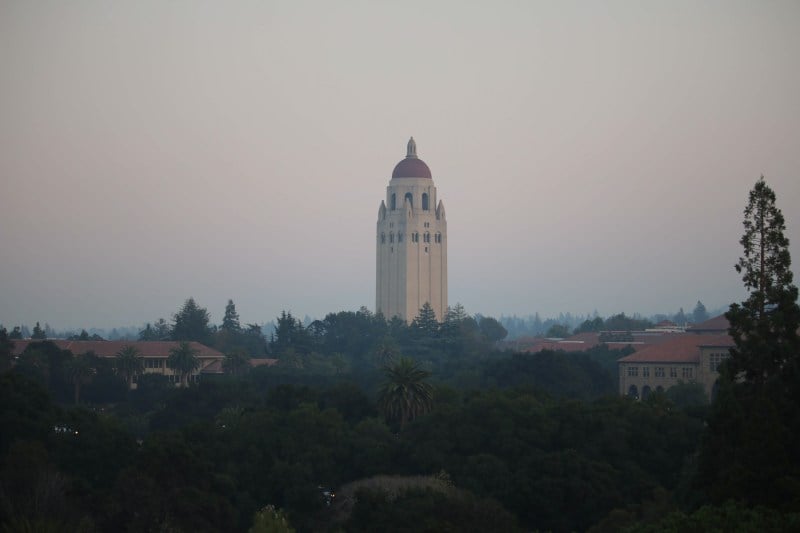Smoke drifted to campus by Sunday afternoon, a tell-tale sign that the wildfires had struck California again.
Gov. Gavin Newsom declared a statewide emergency on Sunday as the raging Kincade and Tick fires have wreaked havoc in Sonoma and Los Angeles counties, collectively torching tens of thousands of acres and displacing more than 100,000 people. Starting Saturday, Pacific Gas and Electric (PG&E) extended preventative blackouts across California, increasing the number of those without power to 3 million customers — including 1.3 million people in the Bay Area — in a bid to prevent more fires.
The Kincade Fire has authorities sending in thousands of firefighters and ordering 180,000 residents to evacuate, in what has become the largest such evacuation in the county’s history. The smaller Tick Fire in Los Angeles County has burned 4,615 acres and is currently at 65% containment.
With air quality visibly declining on campus Sunday, the University is urging students and faculty to stay indoors where possible to minimize exposure, according to an AlertSU. Last year, smoke from the Camp Fire cancelled classes and postponed the annual Big Game between Stanford and the University of California, Berkeley.
The power shutoffs, the largest in PG&E’s history, come as sustained northeast gusts of up to 93 mph throughout the weekend threaten to fan the fires.
San Mateo and Santa Clara counties are among those experiencing outages, with nearby Los Gatos, Cupertino, Redwood City and Los Altos Hills losing power in several areas. Berkeley canceled Monday classes due to the shutoffs’ impact on Alameda County. As with a smaller PG&E outage two weeks ago, Bay Area power shutoffs are not anticipated to affect the Stanford campus.
David King, the meteorologist for the National Weather Service’s Monterey office, told the Los Angeles Times that this weekend’s blend of dry weather, dead vegetation and high winds recall the notably bad years of 1991 and 2017.
“What really sets this apart from 1991 and 2017 is the time that these winds are going to continue gusting above 35 miles an hour,” he added. “The fact that this is going from Saturday night all the way to Monday morning, that’s what is really making this historic.”
Dangerous conditions can turn any ignition into a deadly wildfire, an increasingly perennial problem in the Golden State. Last November the Camp Fire razed the town of Paradise and killed 85 in Sonoma County; at the same time, the Woolsey Fire burned outside Malibu, killing three. The Camp Fire was later found by investigators to have been caused by a faulty PG&E transmission line.
Contact Cooper Veit at cveit ‘at’ stanford.edu and Cole Griffiths at colegrif ‘at’ stanford.edu.
